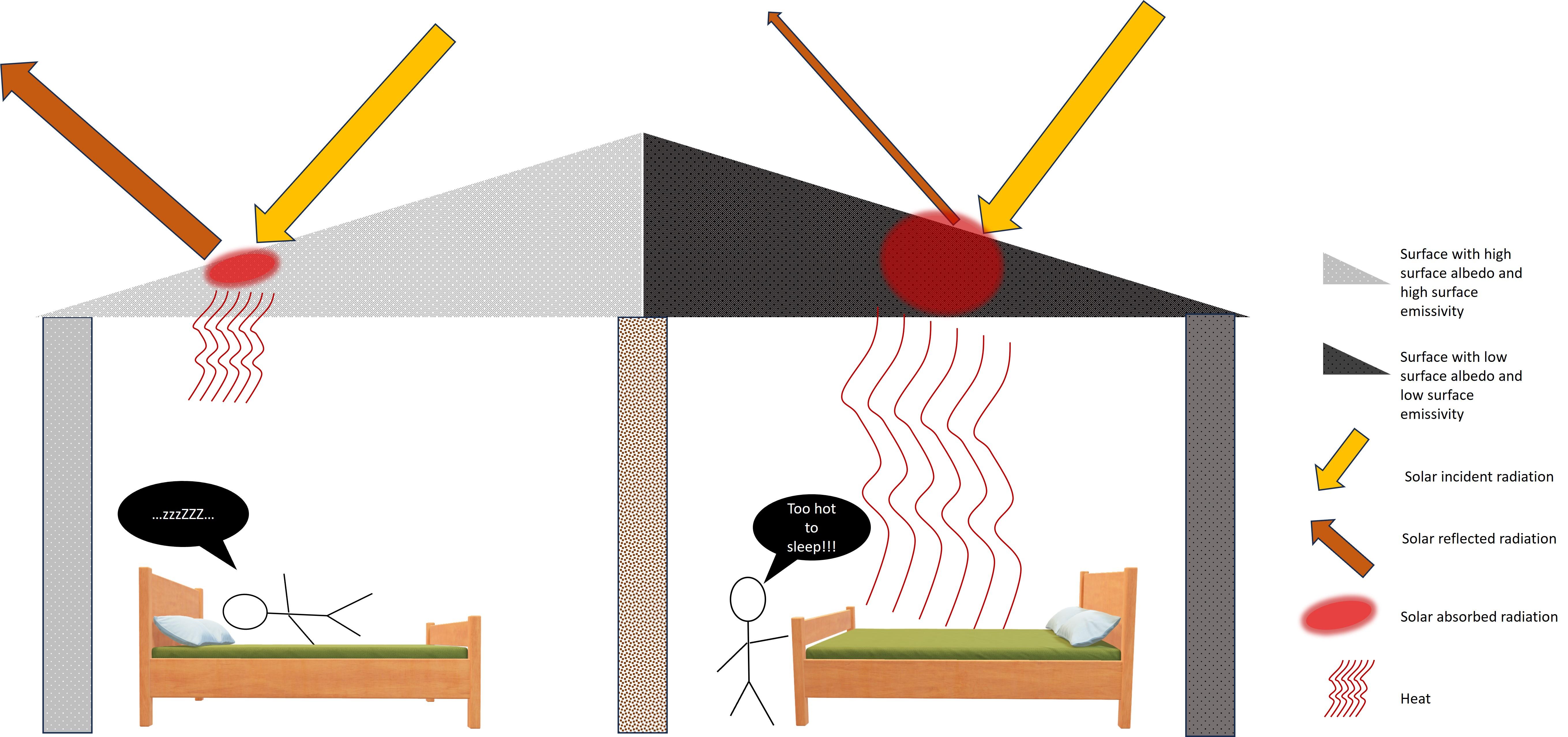Imagine a sunny day: sunlight hits buildings, roads, roofs, and other structures. Some of this solar radiation bounces off, some is absorbed.
Ever felt the lingering heat in a room even after the sun has set?
Surfaces absorb and release solar radiation throughout the day and night. This exchange of energy affects urban heat levels, influencing comfort and energy use.
In the recent report by the European Environment Agency, heat-stress was identified as one of the foremost threats to public health requiring urgent attention. Understanding how solar radiation interacts with urban surfaces is pivotal to design resilience measurements to either maintain or swiftly return to heat-stress levels that ensure a sustainable population well-being.

To minimize heat buildup in our living, working and studying places, we want surfaces that reflect most of the solar radiation and efficiently release absorbed radiation in the form of heat.
These requirements are translated as follows: for an urban surface to keep its cool, it must have high surface albedo and high surface emissivity.
Unfortunately, these parameters are not accessible for each individual element in an urban canopy, and although we can retrieve parameters from satellite optical and thermal-infrared images, it's crucial to understand how the instrumental and experimental configuration of the satellites affects the remote signal, allowing us to estimate accurate and unbiased surface albedo and surface emissivity values.
That's where SUABE's approach is all about.




